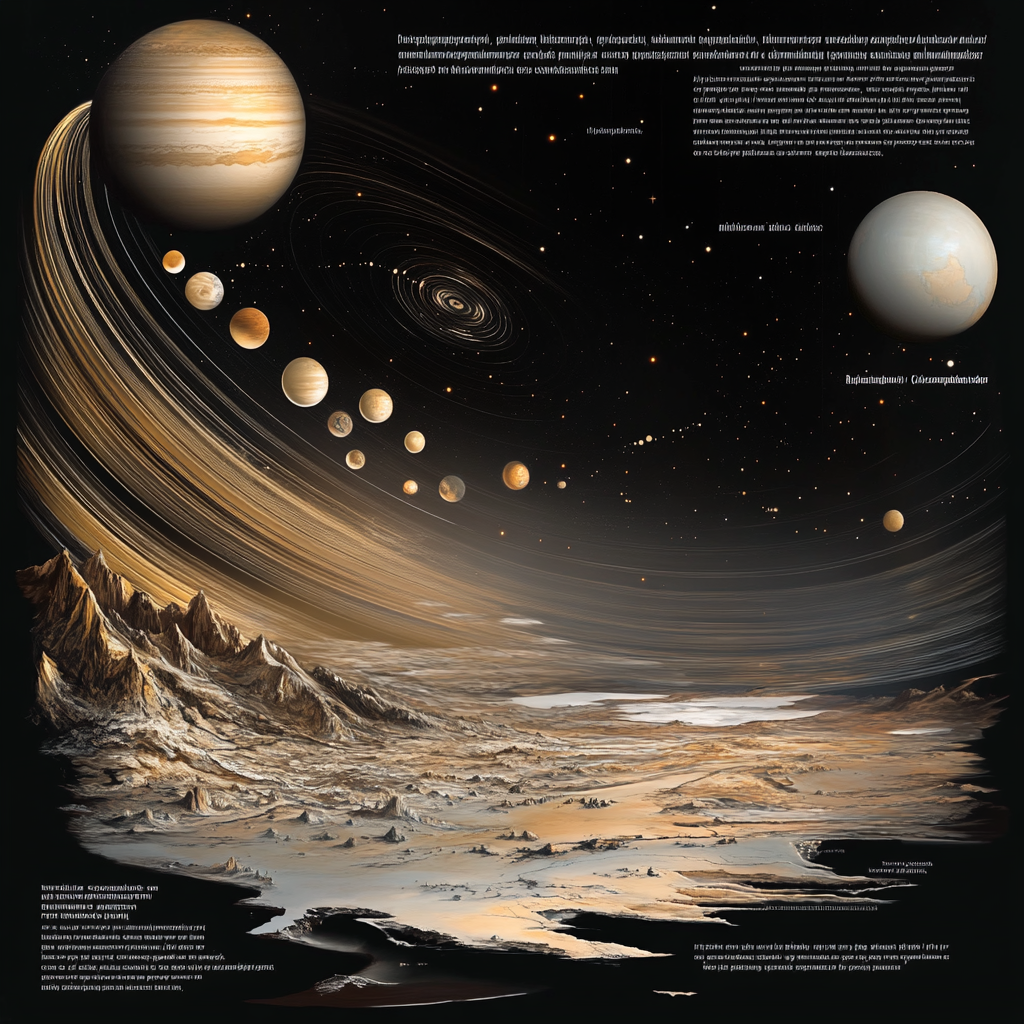
‘Sub-Earth’ exoplanet
In the uncharted tapestry of the universe, peppered with swirling galaxies and aching voids, astronomers have struck gold with an exhilarating discovery: a little celestial gem named Barnard b, the ‘Sub-Earth’ exoplanet. This isn’t just any cosmic pebble; it’s grooving around Barnard’s star, our closest solo stellar neighbor at a mere six light-years from our sun. Buckle up, dear reader, as we delve into the hot mess of facts, theories, and a splash of cosmic imagination behind this up-and-coming superstar in the astronomical scene!
Let’s start with Barnard’s star, or GJ 699 if you’re feeling fancy. Picture it as that quiet, unassuming companion in your neighborhood who, unbeknownst to everyone, has a wild past and an intriguing persona. It’s a red dwarf—a term that should echo in your mind like a dented bell. These stars are genuinely cooler (and I mean temperature-wise) than our own glorious Sun. Barnard’s star flirts with a surface temperature around a chilling 2,500 degrees lower than what we call home. While your morning coffee might comfortably hug the 200°F mark, Barnard’s star is lounging practically in the icy regions of space. Small and mighty, red dwarfs like this one are the flight attendants of the rebellious, vast universe—small in size and mass but dazzling with potential.
But enough about our neighbor. Let’s talk about the protag of our story: Barnard b. With a mass approximately half that of Venus and a mere three times the mass of Mars, this exoplanet flaunts its sub-Earth status with a sort of rebellious pride. Imagine a tiny but mighty creature in the vast field of planetary giants, strutting its stuff. It whirls around its cozy star, completing its space dance in just over three Earth days. That’s right—time is warped here, my friends! At a mere 1.8 million miles away from its star, Barnard b is completing its laps while we’re still sipping our oversized coffees and contemplating the universe’s mysteries.
Getting a peek at Barnard b wasn’t an easy cozy-up for the astronomers. They rolled up their sleeves and employed the extraordinary talents of the Very Large Telescope (VLT) in Chile. With the Echelle Spectrograph for Rocky Exoplanet- and Stable Spectroscopic Observations (you can call it ESPRESSO; it’s much friendlier), astronomers were able to detect the gentle cosmic waltz caused by the gravitational pull of Barnard b on its star. Talk about a cosmic ballet! This method is practically a magician’s trick, drawing forth the dance of the stars and planets in the dark. With a wink and a shimmer, our scientists can glean the existence of worlds unthinkable mere decades ago.
Now, before you start imagining this newfound exoplanet as a potential vacation spot, let’s raincheck that thought. Barnard b is about as habitable as a sauna in the middle of a volcano. With surface temperatures estimated to reach around 250°F, it’s basically a seething pot of “no thanks!” for any liquid water. The notion of habitable zones? Yeah, it skips the whole “liquid water equals life” rule here. Knowing we can’t just hop skip and jump to a sub-Earth that’s hotter than your neighbor’s barbecue on a July weekend, let’s explore the cool implications of this discovery instead, shall we?
Discovering Barnard b is more than just a fun giggle in our cosmic gallery; it’s opening portals into our understanding of how planetary systems reel and whirl around their respective stars. We’ve entered the cosmic backyard filled with these low-mass planets, similar to those sculpted around Proxima Centauri. It whispers of future discoveries—three other planets may be shaking a leg around Barnard’s star, each story slowly teasing itself into existence. Perhaps one of these cosmic dancers could hold conditions more befitting for life; the tantalization of the unknown is stunning.
The ripples of Barnard b’s discovery pulse outwards into future research, feeding curiosity and ambition within the astronomical community. Picture a team of researchers, fueled by caffeine and dreams, ready to decode the mysteries of this stellar neighbor. They’re eyeing Barnard’s star with anticipation, hoping for signals that could unveil more hidden exoplanets lurking just beyond our grasp. Each cosmic blink brings us closer to pinpointing that elusive “goldilocks” zone we’ve been hunting for generations.
The universe’s enigmas tickle our brains and ignite the quest for knowledge like a divine spark. The revelation of Barnard b isn’t just another cosmic chess piece; it inspires the dreamers, the scientists, and the armchair astronomers among us. It’s a nod from the cosmos that we are not alone in our quest for understanding. Each exoplanet discovered adds a shimmering thread to the intricate fabric of our universe. Each newfound world encourages us to dare—dare to reach out and explore the limitless, breathtaking unknown.
So, as we navigate the swirling cosmic dance, let’s ponder our cosmic existence, held together by the tightly woven threads of curiosity and wonder. If the vastness of the universe teaches us anything, it’s that we’ve only just begun to scratch the surface of understanding it. Barnard b has handed us a splendid invitation to look deeper, to ask more questions and push boundaries.
Want to stay up to date with the latest news on exoplanet discoveries and other astronomical findings? Dive into our cosmic community and subscribe to our Telegram channel: @channel_neirotoken. Remember, the universe is brimming with mysteries just waiting to be unraveled, and each new discovery inspires us to stretch our imaginations and ignite our quest for knowledge. ✨

